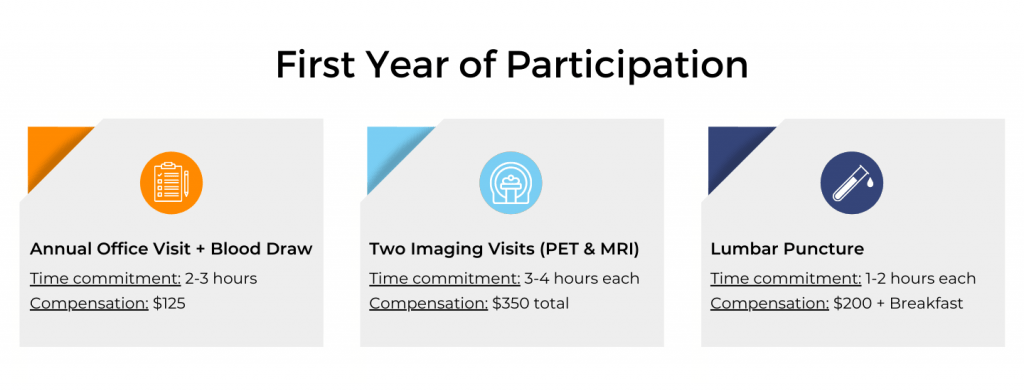If you are interested in participating, please click the link below to fill out our contact form:
Eligible participants will be paid up to $675 the first year, and $125 following years.
Frequently Asked Questions:
Why study driving?
There are about 38-million older adult drivers in the United States. It is essential to keep driving as a safe activity both for these adults and for others on the road. It is also important to find ways to keep older adults active, and driving is such a critical piece of independence for so many people.
Additionally, driving is a very complex task. You have to be able to see what is going on in different directions, pay attention to what is going on around you, watch your mirrors, pay attention to what you hear on the road or from a passenger, turn your body to be able to see in different directions, respond quickly both mentally and physically to changes in the environment, etc. We chose to look at driving because it is an everyday task that uses many different skills and is a meaningful activity of daily living. While many abilities stay intact in preclinical Alzheimer’s disease, we wanted to see how people are affected when they are completing more complicated tasks.
Why are we studying cognitively normal older adults when we want to know about Alzheimer’s disease?
We want to look at driving in older adulthood, from around age 60 through driving cessation. Specifically, we want to see how preclinical Alzheimer’s disease (AD), and later symptomatic Alzheimer’s disease affect driving. In order to look at this, we need plenty of cognitively healthy older adults to help us in these discoveries.
In particular, we want to look at preclinical AD. Preclinical AD is an early period of the disease in which there are not recognized cognitive symptoms (forgetfulness, problems with thinking, memory loss) but there are signs of the disease already in the brain. About 30% of older adults have signs of preclinical AD. We can measure these signs through biomarkers, which are measurements that show particular proteins in the brain. We measure these proteins [amyloid beta (Aβ) and tau] by analyzing cerebrospinal fluid (CSF) taken through a lumbar puncture, images of the brain taken with MRI, CT, or PET scans, and blood-based biomarkers. The CSF and blood can show us how much Aβ and tau are in the brain, but the brain images can show us exactly where those proteins are deposited. Both are very helpful measurements that allow us to look at things in slightly different ways.

What will you do if you come in for our study?
Ahead of your scheduled session, you will receive a packet with directions to the Taylor Avenue Building (TAB), a letter with your scheduled time confirmed, and a few questionnaires. We ask that you fill out the questionnaires ahead of coming to the TAB. This allows you to do it at your convenience and saves you from being at our office too long.
When you arrive on the day of your session, we will go over the informed consent form which explains the study and answer any questions you might have before signing it. Then you will complete a number of brief paper and pencil tasks, as well as computer and oral tasks. We will go through tests of your vision, hearing, smell, motor skills, mood, and attention, along with a blood draw completed by a certified phlebotomist. All of this usually takes about two to three hours.
Next, we will install a small electronic device in your vehicle. This allows us to see how people drive in their everyday life. It gives us information about speed, hard braking, sudden acceleration, impact, time of day, and location, so we can create a driving profile for each participant. It does not contain any audio or visual recordings but simply records information from the vehicle itself. Rather than looking at any particular day or time, we are more interested in changes over time. Is someone driving less often, less far, at specific times of day, more or less carefully, etc. We do NOT give any information to your insurance or physician!
Are you eligible to be a research participant?
We are always interested in recruiting people who are willing to be involved in research. If you are 65 years of age or older, a licensed driver, and drive on average one time per week, we would love to have you! Please fill out the participation form linked above.
About the PET Imaging Procedure
Here is a PET fact sheet link.
Interested in Participating?
Click the link below and fill out the participation form